The History of Kollegewidgwok Yacht Club
by Robin Clements
Kollegewidgwok Yacht Club came into being not so much as a yacht club as an idea: to teach children to sail.
In 1920, Dr. Seth Milliken bought two Brutal Beasts, stubby, beamy, rather unforgiving little sailboats, one for his children Seth and Alida, the other for their cousins. The boats were moored off the stone playhouse now known as Shawna Point, in East Blue Hill.
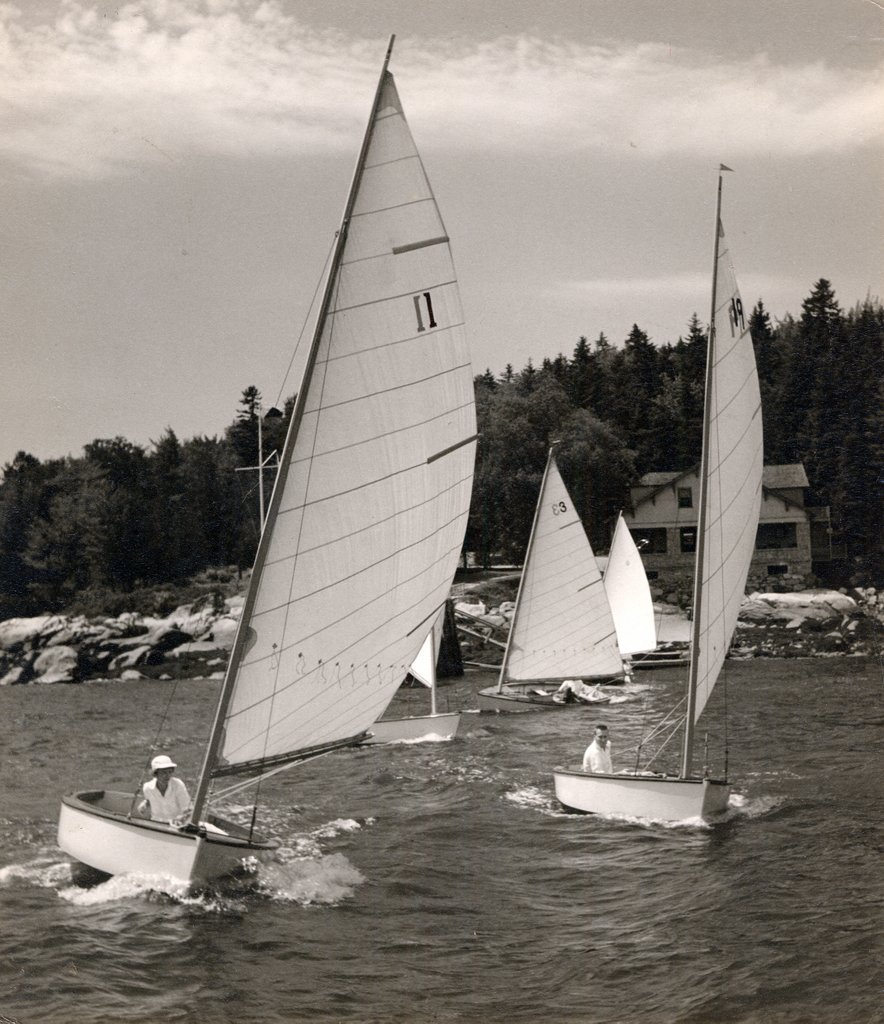
In 1922, two important events occurred. First, ten more Brutal Beasts were delivered, shipped by steamer and unloaded to great excitement at the Steamboat wharf on Peters’ Point. They had been ordered by many summer families: the Dohmes, Westons, Slavens, Teagles, Palmers, Rutans, Haskells and Holdens, and they were given names like “Elephrog,” “Fill-i-loo,” “Jabberwock” and “Wampie.” The inaugural race of these twelve Brutal Beasts was held on July Fourth.
Later that month, anticipating the arrival of the Eastern Yacht Club cruise, Dr. Milliken ordered some engraved cards, with a burgee in one corner, and a message that “The Kollegewidgwok Yacht Club welcomes Captain”—here there was a blank to be filled in by the children—of the Yacht”—another blank—to Blue Hill Bay and to the use of the club’s facilities.” The children were sent out in Brutal Beasts to greet the imposing yachts as they entered Morgan’s Bay, and to present a card to each.
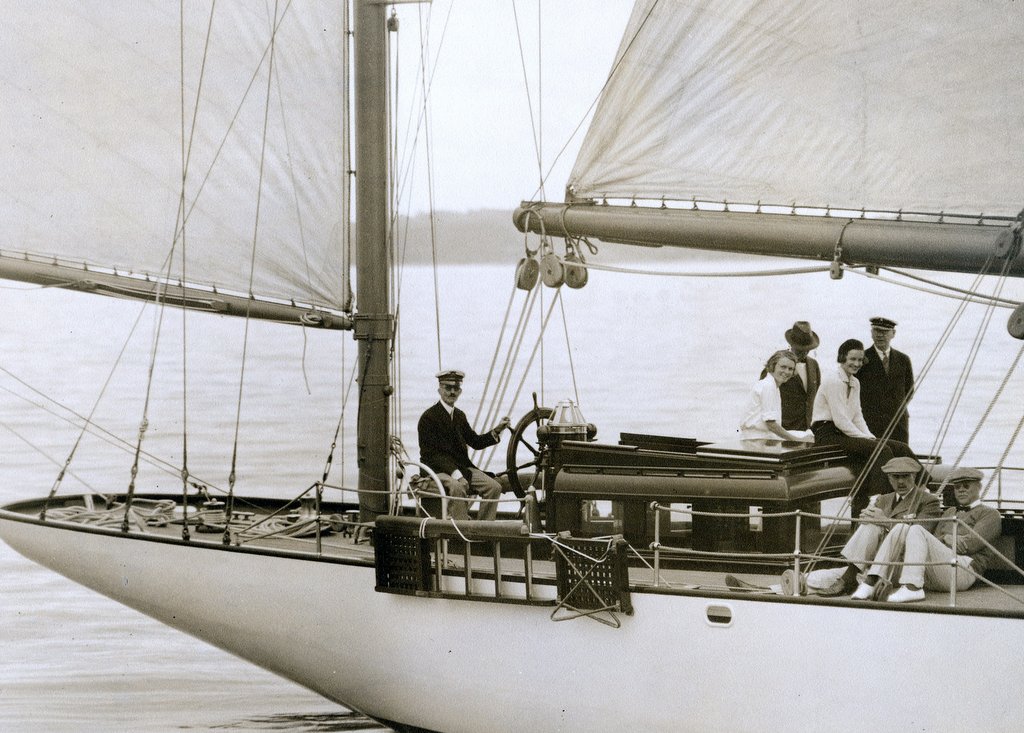
The ninety-foot schooners with uniformed crews, polished brass and gorgeous brightwork were a little unprepared for such a welcome. The crews nervously broke out boathooks and fenders as the flotilla of tiny sailboats with suntanned children descended on their fleet, but the Blue Hill captains sailed smartly alongside, never touched a single boat (“Never touched their damned boats,” one captain remembers), and delivered the cards with perfect nautical manners.
This was the first official act of the Kollegewidgwok Yacht Club, which may be said to have come into being on that sparkling day in July, 1922. Its name was one found by Mrs. Milliken in the New York Public Library as she looked for possible names for a boat. Its burgee was an adaptation of Dr. Milliken’s private signal, with the blue mountain, the green sea and the white sky. Its clubhouse was the Milliken’s granite playhouse. Its members were mostly under the age of 15.
A word about the name. Mrs. Milliken’s source was undoubtedly William Willis, who wrote an 1856 monograph on Indian place names in Maine. Willis relied on Rev. Michael Charles O’Brien, an early missionary to the Abenaki tribes, who noted in his logs: “Kollegewidgwok. Blue Hill.” What Fr. O’Brien knew (and Mr. Willis did not), however, is that it referred to the tidal falls, not the mountain. It literally means “salt-fresh rapids” or “mixed rapids,” because the Indians knew that in the spring melt, the outgoing water in the falls is brackish, as feeder streams, pouring into the Salt Pond, reduce its saltiness. From Fr. O’Brien’s notes we can also tell that the true pronunciation was closer to “Kalud-am-itch-wan.”
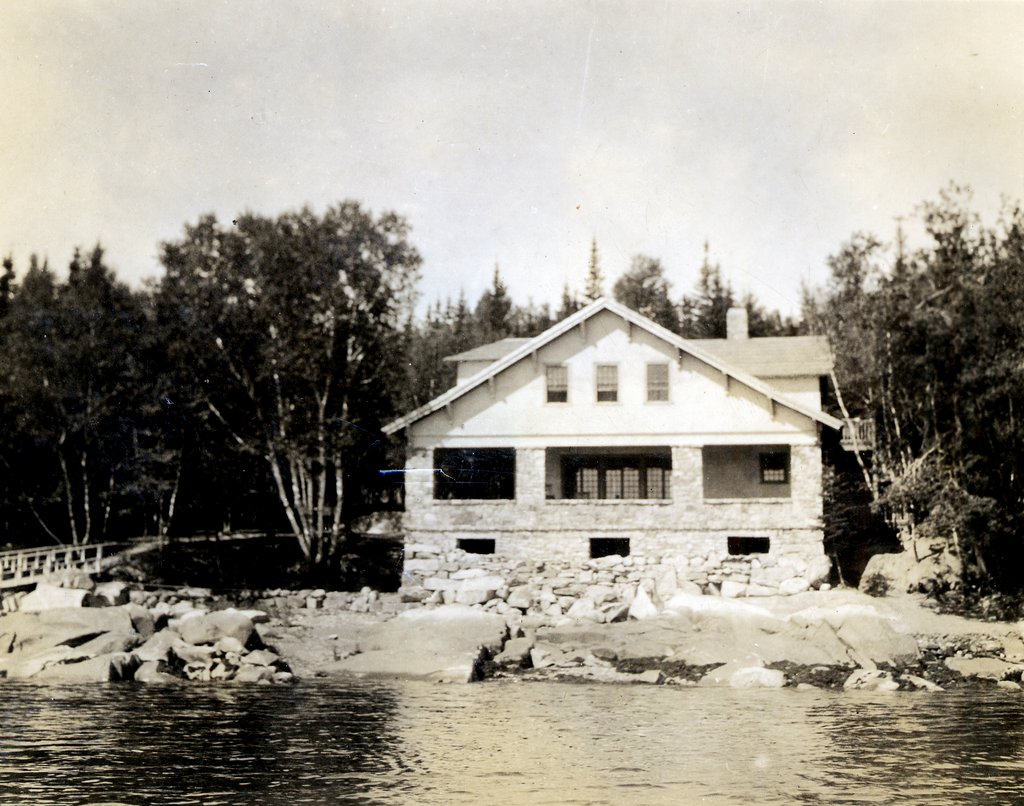
For nearly twenty years the club continued to be a racing society more than a regular club. There were no real members—you just raced. There was no real clubhouse—just Dr. Milliken’s playhouse, which was soon known simply as “The Yacht Club.” There were no employes, though the Commodore did hire men to run a launch. The only real events were the midweek races, held in Morgan’s Bay, and the Saturday races, held in Blue Hill Bay. There was no club launch, though tow boats were necessary to get the Blue Hill fleet to East Blue Hill and vice versa, and to serve as race committee boat. Handsome silver trophies were supplied—and awarded—by the Commodore. Racers were shepherded by Dr. Milliken in the “Two Forty,” so called because she was hull No. 240 from Nathaniel Herreshoff (built in 1904 and on display today in the Herreshoff Museum) and by Cy Cousins in “Meadows,” which was the Milliken family name for any serving man, much as one might say “Jeeves.”
The club moved to its present site after World War II. The land was bought in 1946 from Emilie Loring, the famous romance writer, who owned a broad stretch of the eastern shore of the inner bay. The site had three advantages: first, it was half way between Blue Hill and East Blue Hill; second, it possessed an excellent anchorage; third, it was the spot where the old Blue Hill Granite Company had a loading dock, whose massive foundations were still usable. Members set up a big tent, put out a small float, and began raising money to build a permanent clubhouse. The best way to raise money turned out to be dinners, and the big draw for the first annual dinner was a variety show performed by members, which immediately became a tradition. With a chorus dressed as clams and actors dressed as lost young Indians in canoes, piteously calling out “Which Walk? Which Walk?”, the audience saw the wise tribal elders establish a “College of Which Walk.”
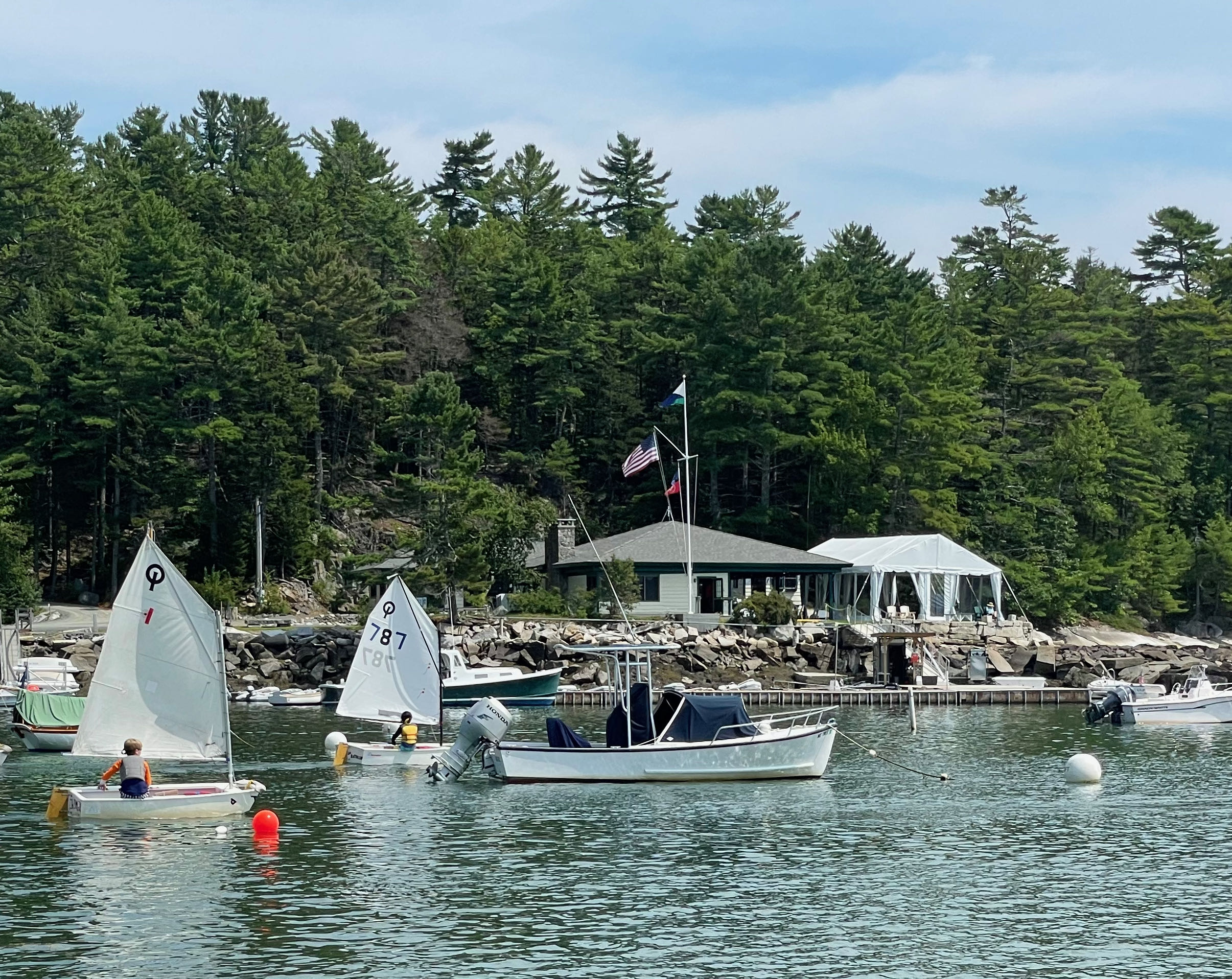
Louis Gelders, an architect from Connecticut and a South Blue Hill summer resident, designed the building, which was finished in time for the 1948 season, complete with a tiny kitchen and a magnificent granite fireplace which smoked in just about any weather.
The first launch owned by the club was the "Virginia," bought for the purpose and donated by Dr. Milliken. It was the fitting ancestor of the other club launches: poorly designed, balky, and only marginally seaworthy. In short, it was a tub. It was replaced in the mid-1950's by a slightly better hull and slightly worse engine, a diesel that required so much ether to get started that staff members very nearly passed out every time the boat was used. This was the first "KYC." The second KYC had a much better hull, built by Cy Cousins at Webber's Cove, and a gas engine that was more reliable. Like all the others, it was cut along the lines of a lobster boat, and served until 1974, when it was replaced by the third KYC, a fiberglass launch, also a product of Webber's Cove, 34 feet in length, still in use today.
The growth and success of the Junior Program in the late 1990's led the Council to discuss and finally (in 2003) establish a separate and somewhat independent corporation to run our sailing school. It is called the Kollegewidgwok Sailing Education Association to create the catchy acronym, KSEA, by which it is generally known. (In error, a clerical gremlin inserted the word "and" between Sailing and Education in its articles of incorporation, making it technically KSaEA; but this fact is little known.) Powered by extensive legal work from two Council members, Shelley Kehl and Jim Modisette, KSEA was shaped to resemble a community sailing program while keeping strong organizational ties to the club. Incorporated as a not-for-profit corporation with its own board, flag, and staff, it could and promptly did raise a lot of money to buy boats, repair its launches ("Save the Whalers!"), and ultimately lease a plot of land from the club for construction of its headquarters. The appearance of KSEA also provided some tax-deductibility for donors interested in the mission of junior sailing. Its real importance, however, has lain in its ability to reach both members and non-members in an effort to teach sailing to anyone who wants to learn. KSEA has added Adult Sailing Week and Learn to Sail Week (mostly for youngsters), and strengthened the ties between the Club and George Stevens Academy sailing teams. Its future looks bright.
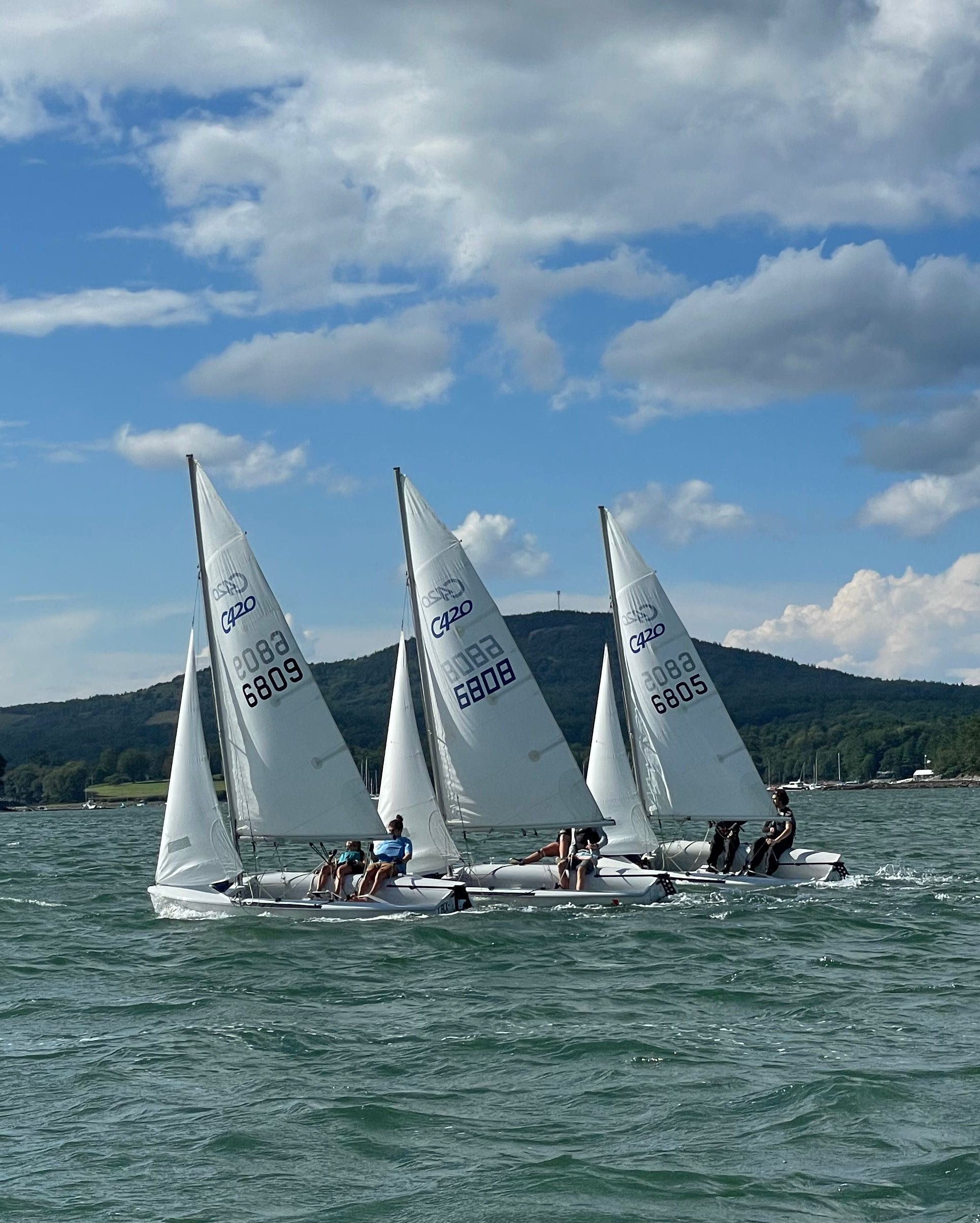
The first paid staff members was Sidney Rogers, hired in 1946 as a sailing instructor. Sailing instruction was the principal job of the club, but with the new clubhouse, other duties were necessary, and the position gradually took on aspects of manager and sailing master. Chet Harrington and Charlie Dethier were co-managers in 1949, and Charlie went on to serve eight more years in the 1950's and 60's. Wheaton Byers, George Wylop and Bob Dixon managed the club in the 1950's. Other managers have included Bob Slaven, Kim Coit, Rusty Duym, Dave Danielson, Geoff Anthony, Gil Leaf, Dan Poteet, Bill Grindle, Dick Gibson, Jr., T.J. Baker, Paul Ahern, Bill Crofoot, Scott Futcher, Samantha Coit, Clyde Kirkpatrick, Henry Clews, Sam Vaughn, and Mark Boshko.
An era truly ended at the annual meeting in 1954 when Commodore Milliken, after 33 years in the position, handed the blue flag to Boots Britton. Since then, commodores have served three or four years, and it seems unlikely that anyone will break our founder’s amazing record. If, as Emerson wrote, an institution is the lengthened shadow of one man, our yacht club can be said to be the lengthened shadow of our determined founder and his desire to teach love and respect for sailing.
Past Commodores
1922-54 Seth M. Milliken
1954-56 Brigham Britton
1956-57 Andrews Wanning
1957-59 Paul Starkey
1959-61 Lucie Rumbough
1961-63 Brigham Britton
1963-65 Edward S. Rendall
1965-67 Henry Becton
1967-69 Crocker Nevin
1969-73 Charles Coit
1973-75 Richard C. Gibson
1975-77 David Heilner
1977-80 A. Tucker Cluett
1980-84 John F. Milliken
1984-87 William Fenn
1987-89 A. Tucker Cluett
1989-91 Richard C. Gibson
1991-93 Duncan Neuhauser
1993-98 Jeffery Becton
1998-2001 Ethelbert Nevin
2001-2006 Robert Clements
2006-2009 Henry Becton, Jr.
2009-2012 Richard S. Gurin
2012-2015 Thomas F. Richardson
2015-2017 Robert G. Shepley, Jr.
2017- 2020 Ann K. Luskey
2020 - 2022 Sean Guinness
2022 - Tommy Morris
